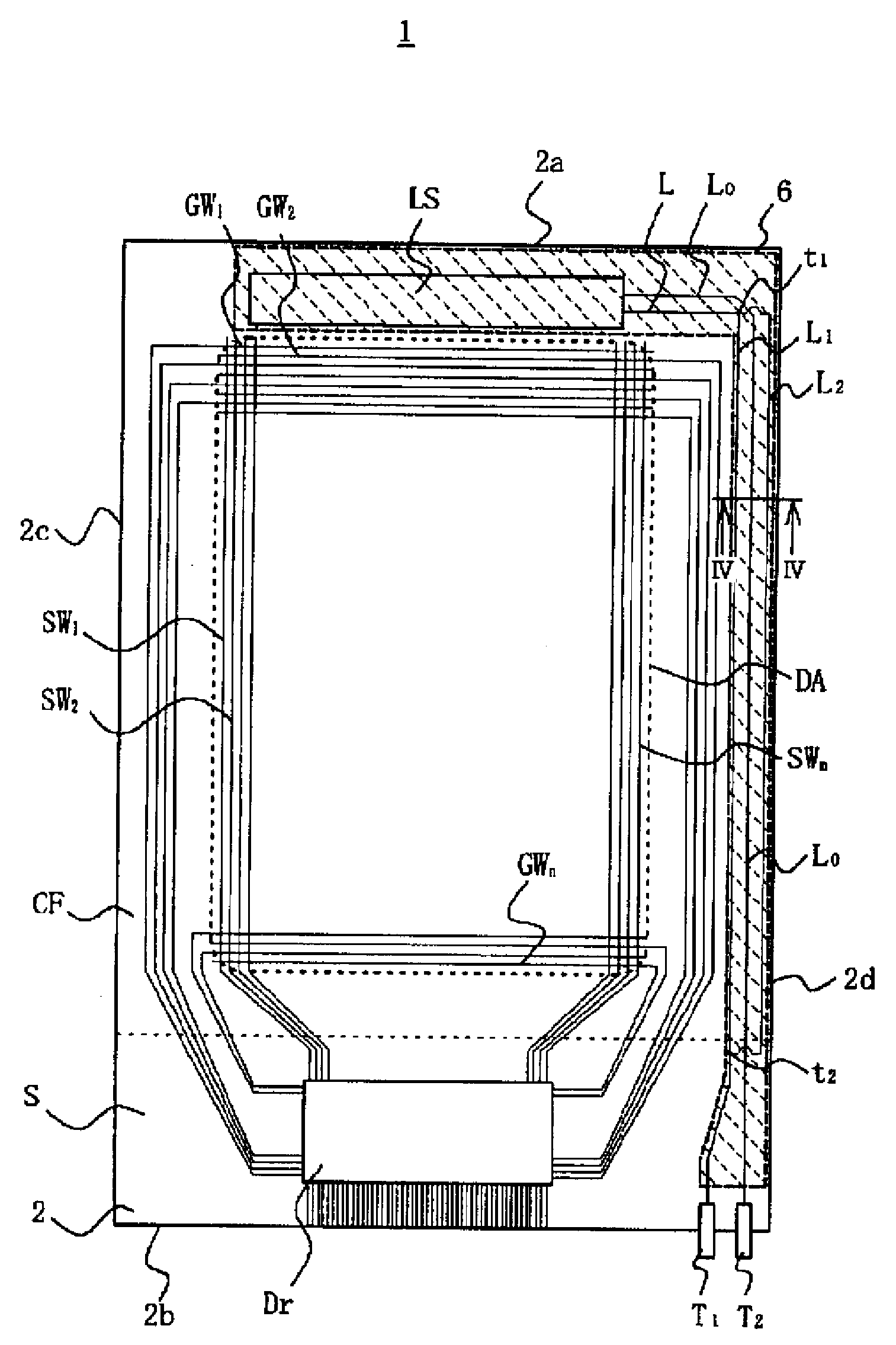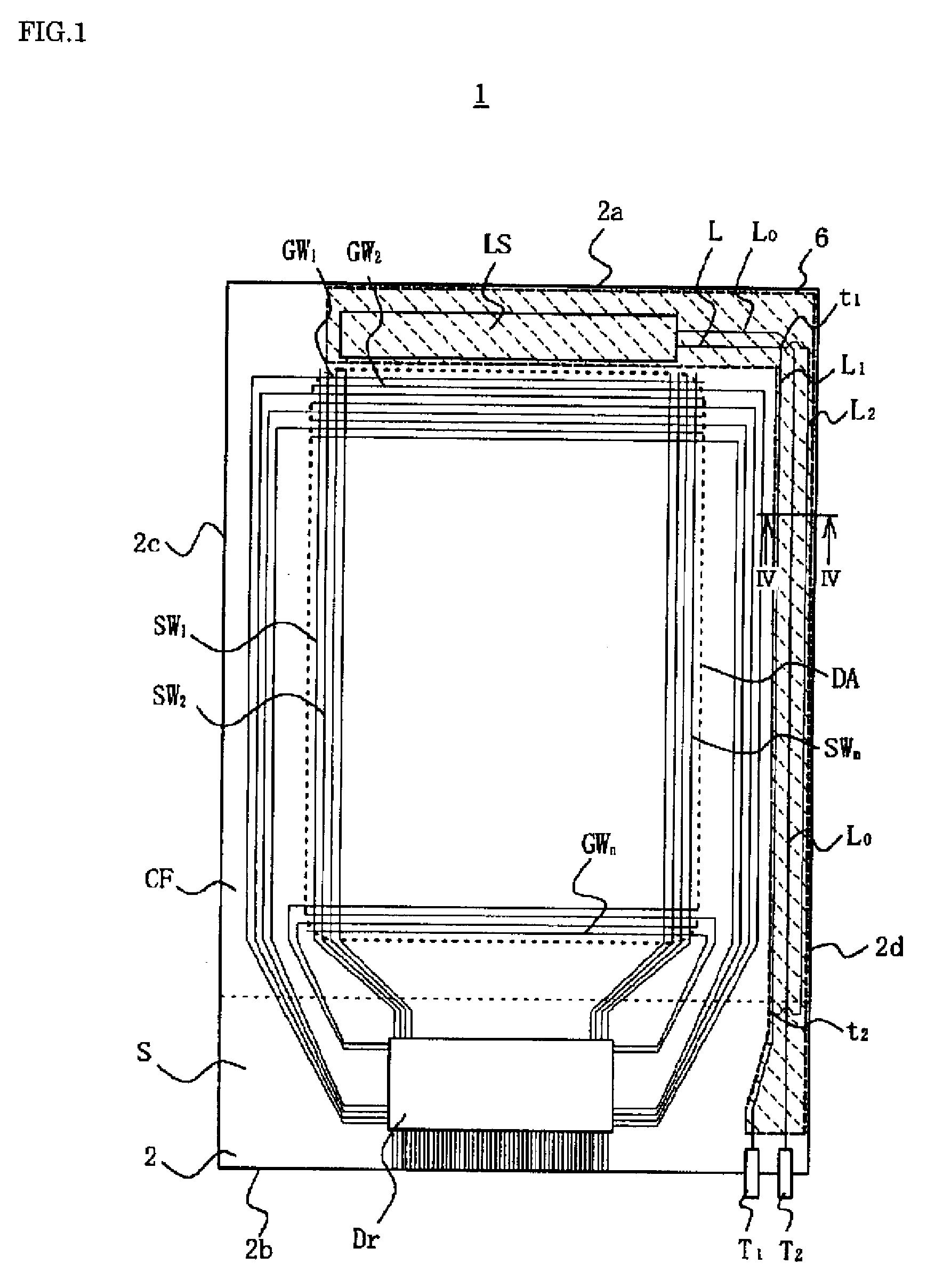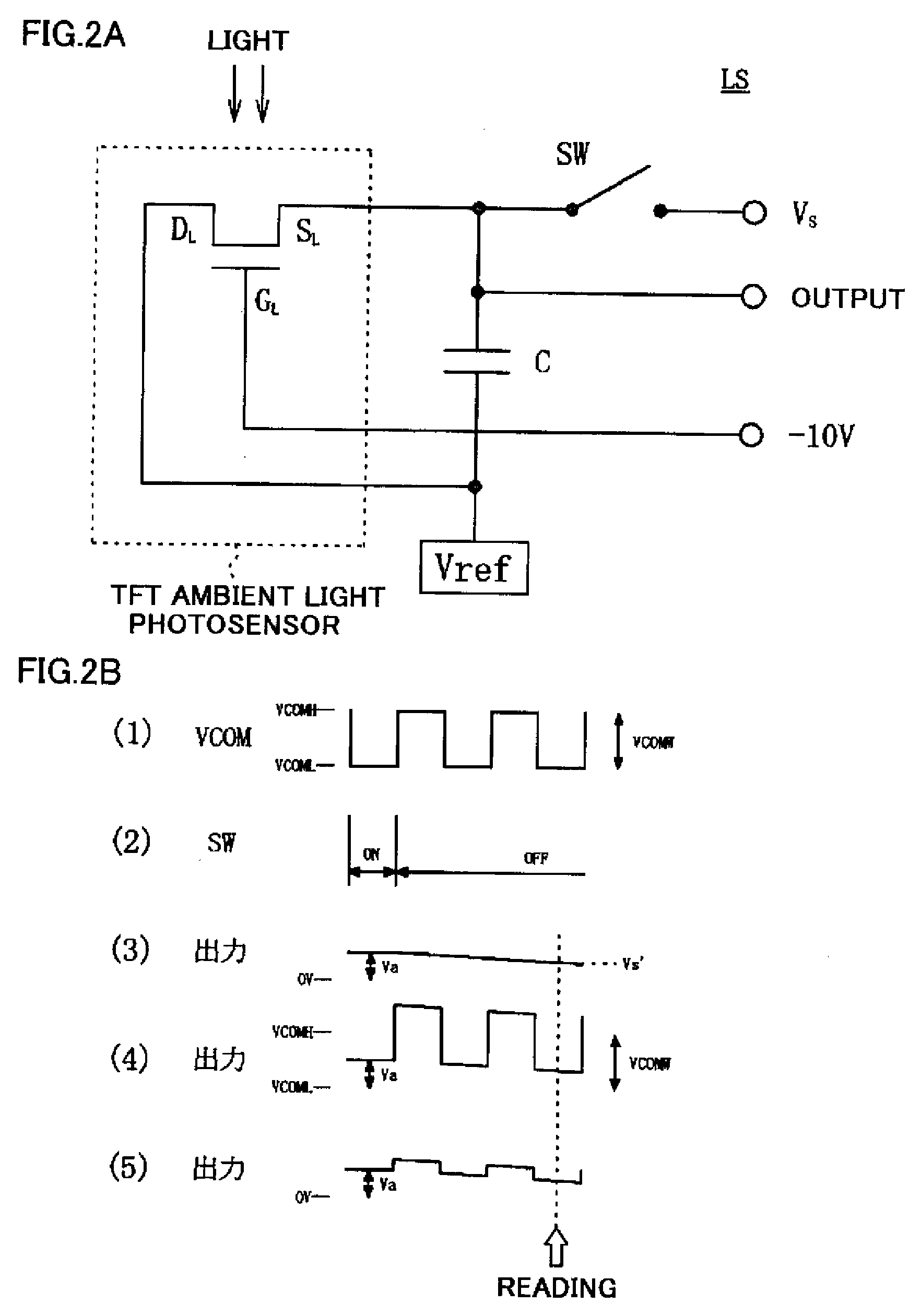Liquid crystal display device
a display device and liquid crystal technology, applied in the field of liquid crystal display devices, can solve the problems of high power consumption, easy to run down the battery, and difficult to see the image in dark places
- Summary
- Abstract
- Description
- Claims
- Application Information
AI Technical Summary
Benefits of technology
Problems solved by technology
Method used
Image
Examples
first embodiment
[0061]FIG. 1 is a plan view illustrating schematically the TFT substrate in a liquid crystal display panel of a First Embodiment of the present invention, seen through the color filter substrate.
[0062]As FIG. 1 shows, a liquid crystal display panel 1 has a pair of rectangular substrates, namely an active matrix substrate (below, “TFT substrate”) 2 and a color filter substrate CF, that are constituted of a transparent material such as glass and deployed opposing each other. The TFT substrate 2 is of a larger size than the color filter substrate CF, so that when it is positioned opposing the color filter substrate CF, an overhang portion S of a particular extent is formed. The structure is such that seal material is stuck around the peripheries of the TFT substrate 2 and color filter substrate CF, and liquid crystal and spacers are sealed into the interior space therebetween.
[0063]On the opposed faces of the TFT substrate 2 and color filter substrate CF, there are formed various wirin...
second embodiment
[0085]FIG. 6 is a schematic plan view of the TFT substrate in a Second Embodiment of the invention, seen through a liquid crystal display panel's color filter substrate, and FIG. 7 is a cross-sectional view along line VII-VII in FIG. 6.
[0086]Compared with the liquid crystal display panel 1 of the First Embodiment, a liquid crystal display panel 1A of the Second Embodiment has a similar structure, except that the power line and output line are disposed in a stacked arrangement. Below, accordingly, the structural elements that are in common with the First Embodiment are assigned the same reference numerals as before, and only those elements that differ are described, so as to avoid redundancy.
[0087]In the liquid crystal display panel 1A, the power line L and output line L0 issuing from the photosensing unit LS are stacked, with the gate insulator 3 interposed therebetween. More precisely, as FIG. 7 shows, the structure is such that: the power line L is provided, during the same proces...
third embodiment
[0092]FIG. 9 is a plan view of the liquid crystal display panel of a Third Embodiment of the invention, presented in such a manner that, through the color filter substrate that is laid over the TFT substrate, the wiring of the TFT substrate beneath is visible. FIG. 10 is a cross-sectional view along line X-X in FIG. 9. This liquid crystal display panel 1B of the Third Embodiment has a structure similar to the liquid crystal display panel 1 of the First Embodiment, except that the power line and output line are disposed in a stacked arrangement. Below, accordingly, the structural elements that are in common with the First Embodiment are assigned the same reference numerals as before, and only those elements that differ are described, so as to avoid redundancy.
[0093]This liquid crystal display panel 1B is so structured that the output line L0 issuing from the photosensing unit LS is formed on the gate insulator 3 and covered by the protective insulator 5, and the conductive film (ITO)...
PUM
| Property | Measurement | Unit |
|---|---|---|
| charging voltage | aaaaa | aaaaa |
| transparent | aaaaa | aaaaa |
| distance | aaaaa | aaaaa |
Abstract
Description
Claims
Application Information
 Login to View More
Login to View More - R&D
- Intellectual Property
- Life Sciences
- Materials
- Tech Scout
- Unparalleled Data Quality
- Higher Quality Content
- 60% Fewer Hallucinations
Browse by: Latest US Patents, China's latest patents, Technical Efficacy Thesaurus, Application Domain, Technology Topic, Popular Technical Reports.
© 2025 PatSnap. All rights reserved.Legal|Privacy policy|Modern Slavery Act Transparency Statement|Sitemap|About US| Contact US: help@patsnap.com



